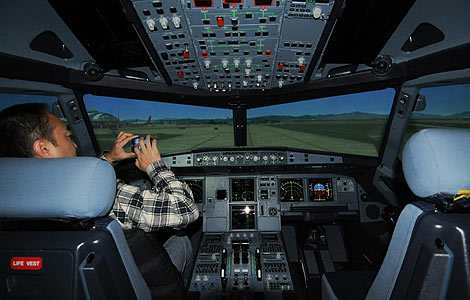
NANCHANG - Chen Haiyan, a rural teacher in a poverty-stricken county in East China's Jiangxi province, is jealous of her pupils' new learning environment.
This semester, she teaches in her hometown elementary school with the aid of the Internet and multimedia facilities, while she first used these tools only after she had become a college student.
The Xujiadu primary school, which she works with, is one of the beneficiaries of a national project known as "Connecting Every Class", a major undertaking of the Ministry of Education to bridge the rural-urban education gap.
Due to imbalance in economic development and distribution of educational resources, students in developed regions enjoy quality resources and therefore have a better chance of getting into colleges than pupils from poor regions.
There are many shabby rural schools in the country's outlying regions and some pupils do not even have desks or chairs.
"Teaching facilities in my village school lag 20 years behind compared with a township, while 50 years compared with those in Beijing," said Guo Changju, headmaster of a village primary school in western Guizhou province.
Education authorities are trying to provide students in rural areas with the same learning resources as those in urban areas. One of the key solutions is the use of the Internet.
In Jiangxi province, more than 300 rural primary and middle schools had Internet connections and multimedia facilities in classrooms at the end of 2011. Thanks to these facilities, quality classroom instructions from big cities are available to classes in remote rural schools.
In 2008, the Puyang city government in Central China's Henan province offered Internet connection in each class in the city's rural schools.
Multimedia facilities have also been considered a good way to get students more involved in class.
Zhang Fuhui, a geography teacher in the Sixi Middle School in Shanggao county of Jiangxi province, said thanks to the use of multimedia projectors, students have become more interested in the subject and can participate better in class.
"We used to learn only with textbooks. Now with projectors, we can study more efficiently and thoroughly," said Yan Qian, a student in the school.
"With a click of the mouse, detailed information and vivid graphics are displayed," Zhang said.
According to a national program on the development of education, the "Connecting Every Class" project should cover basically all rural classes by the end of 2015.







